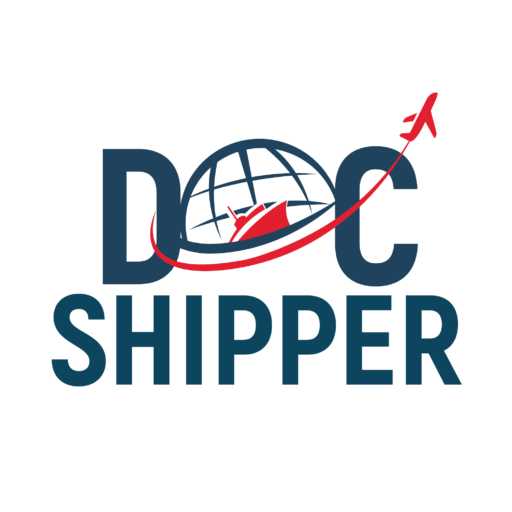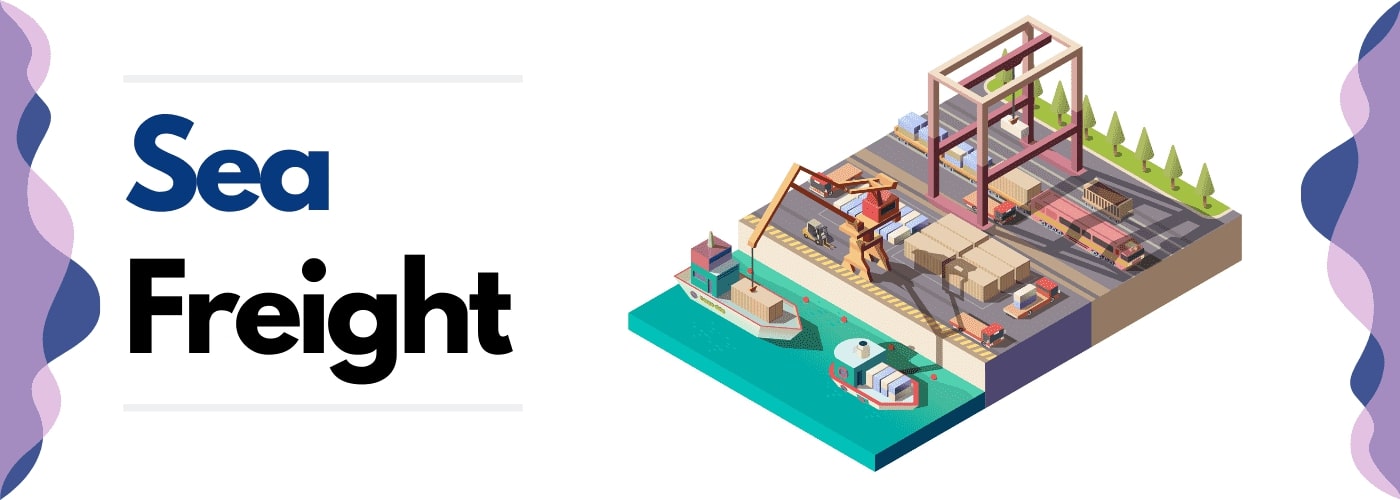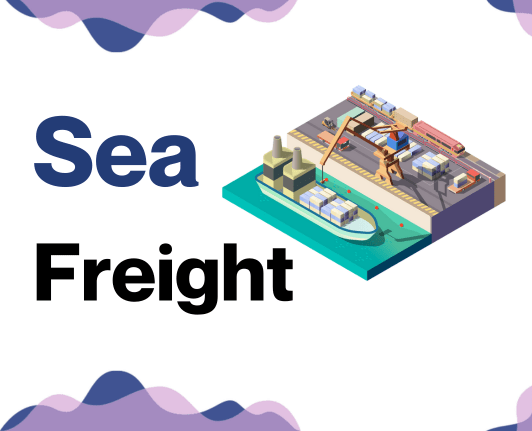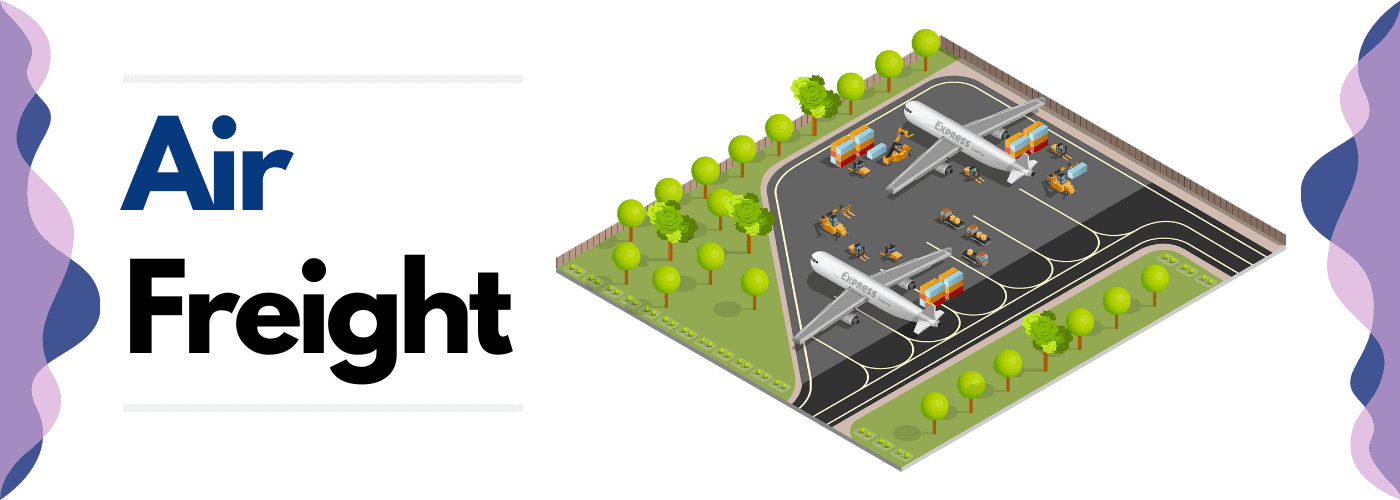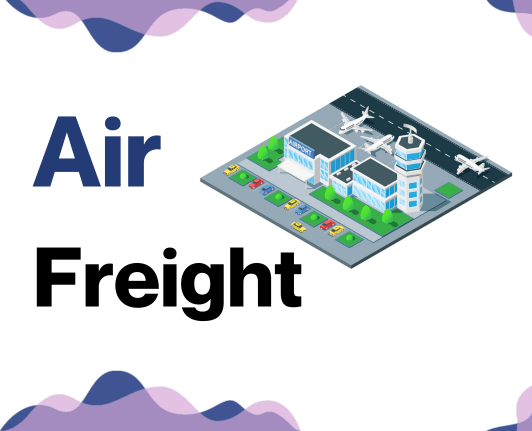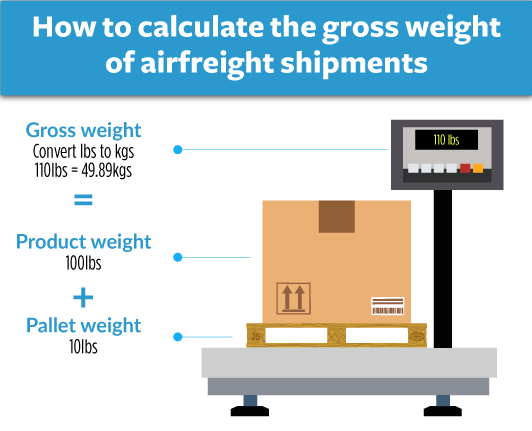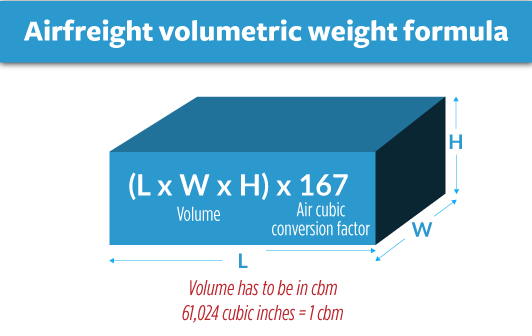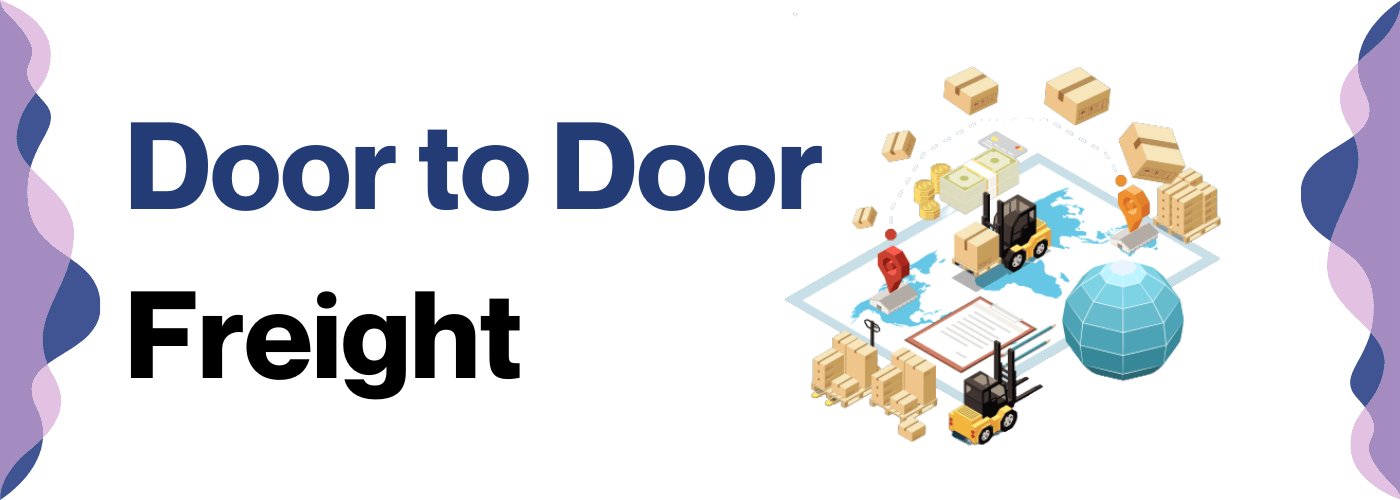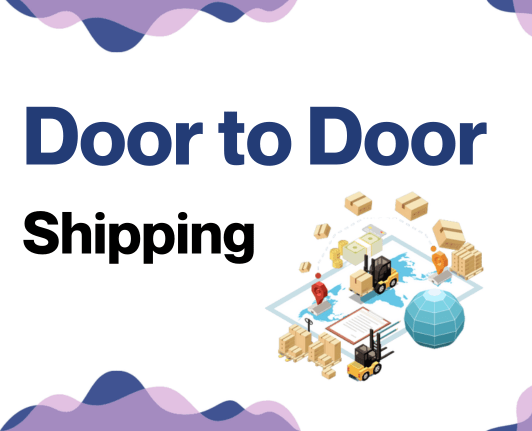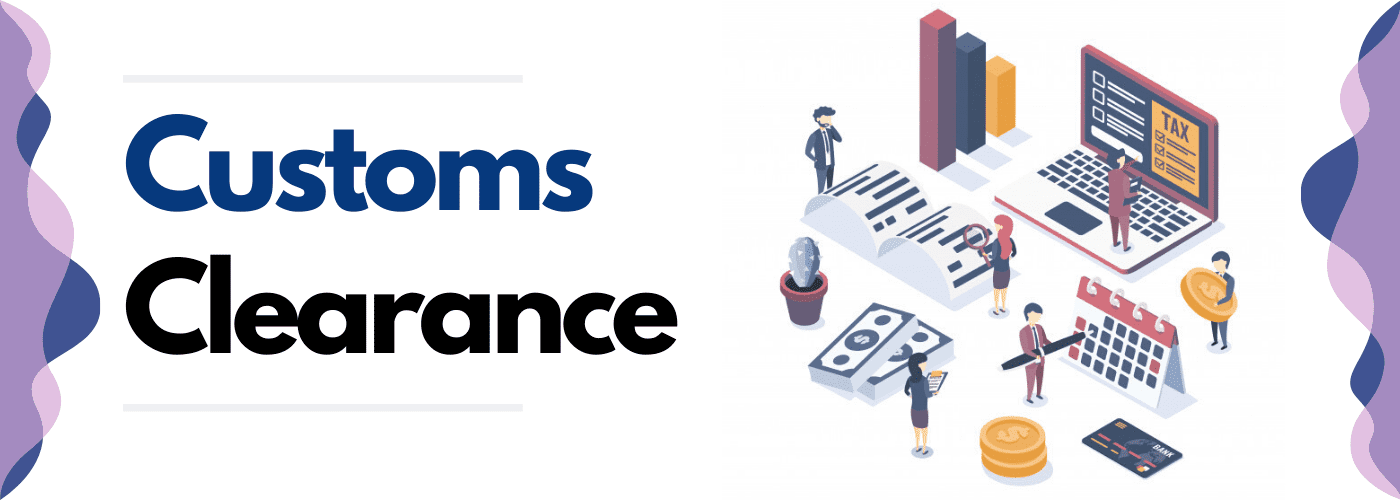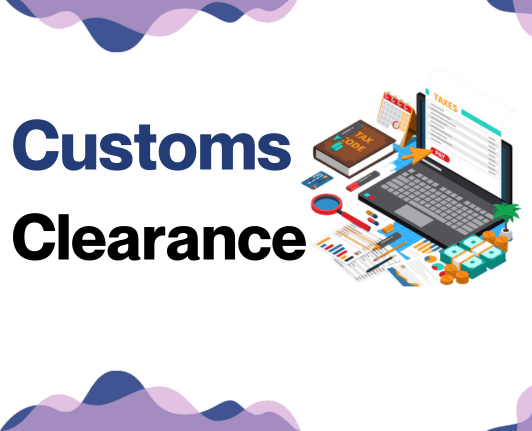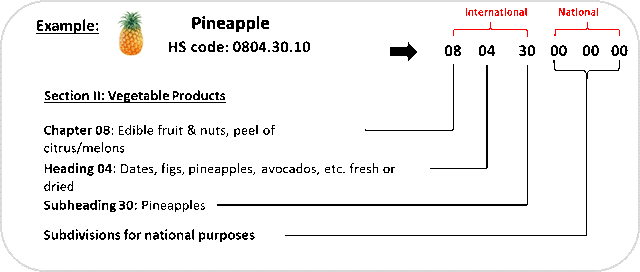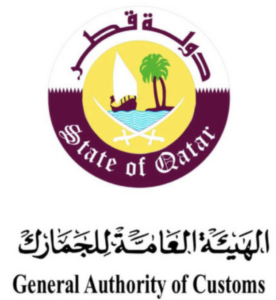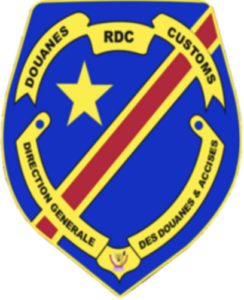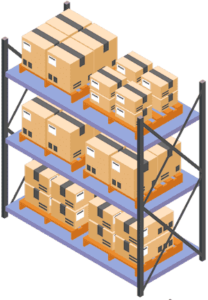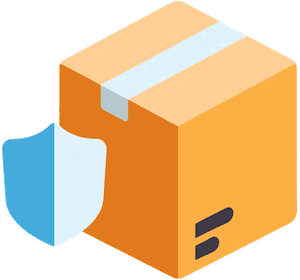If you think navigating the world of international shipping is harder than herding cats, you're not alone!
Understanding rates, tracking transit times, and wrapping your head around customs regulations between Qatar and the Democratic Republic of Congo can feel like a mammoth task. Fortunately, this comprehensive destination guide will help you demystify these pain points. Within these pages, we cover everything from various freight options - air, sea, road, and rail - to understanding the ins and outs of customs clearance, duties, taxes, and we're tossing in key advice specifically tailored for businesses. If the process still feels overwhelming, let DocShipper handle it for you! As a trusted international freight forwarder, we take care of every step in your shipping journey, turning potential challenges into success stories for your business.
Which are the different modes of transportation between Qatar and RDC?
Choosing the right transport method between Qatar and the Democratic Republic of Congo isn't like picking a dessert off a menu; there are complex elements at play. Imagine the journey as a roadmap; some roads may be longer, others smoother, but there's always an optimal route. Geographical traits, such as distance, and the many international borders, don't make the journey any simpler. This leaves us with a range of practical options. It's critical to pick one that’s akin to a well-oiled machine, syncing harmoniously with your shipping needs. Picking wisely can save both time and economic resources.
How can DocShipper help?
Experience the ease of shipping goods between Qatar and the Democratic Republic of Congo with DocShipper's expert team. We arrange everything from transportation to customs clearance, making international shipping hassle-free. Want to know more? Contact us for a free estimate within 24 hours, or call our consultants for a friendly, no-obligation chat about your shipping needs.
DocShipper Tip: Sea freight might be the best solution for you if:
- You're dealing with hefty quantities or large-scale goods. Sea freight is your go-to for maximizing space without stretching your budget.
- Your cargo doesn't have an urgent deadline, as sea freight typically has longer transit times compared to air or rail.
- Your shipping routes are between major ports, allowing you to leverage the extensive global network of sea shipping lanes.
Sea freight between Qatar and RDC
Welcome to the whirlwind world of ocean shipping between Qatar and RDC. As two key players on the global stage, their vibrant commercial relationship is enacted over a blue highway of sea routes, connecting Qatar's bustling Umm Sa'id with RDC's heart-throbbing Matadi port. If you're planning to orchestrate a load of high-volume goods across these nautical miles, sea freight is your pocket-friendly ally. However, riding this cost-effective wave isn't always smooth sailing.
Why? Because for many shippers, the journey from Qatar to RDC is like a game of chess with constantly changing rules. Getting the pieces - your cargo - from point A to B while tackling an obstacle course of customs regulations, documentation, and operational challenges can feel like an uphill task. But fret not! Just as any seasoned sailor will tell you - every problem has a solution. This guide will be your compass, outlining best practices to steer clear of common shipping pitfalls. Buckle in as we set sail to decode the specifications to make your shipping process easier.
Main shipping ports in Qatar
Hamad Port:
Location and Volume: Situated in Umm Al Houl, close to the town of Al Wakrah, Hamad Port is an integral part of Qatar’s commercial activities. As the largest port in the Middle East, it notably processed over 1.5 million TEU annually.
Key Trading Partners and Strategic Importance: Hamad Port works with a diverse set of trading partners across the globe but has especially strong connections with Asia and Europe. Moreover, due to its strategic geographical location and advanced infrastructure, it has solidified Qatar's position in the global trade network as a primary gateway for imports, exports, and international maritime trade.
Context for Businesses: If you're looking to scale your import/export operations into the Middle Eastern markets, Hamad Port could become a crucial hub in your logistics chain, given its vast capacity and state-of-the-art facilities. Its easy connectivity with major global shipping lines could also help in reducing your transit times and costs.
Al Ruwais Port:
Location and Volume: Found in the northern town of Al Ruwais, Al Ruwais Port is a fortified port primarily used for trading with neighboring countries. This port plays an essential role in facilitating the movement of goods, especially essential food items, with an estimated yearly volume of 250,000 TEU.
Key Trading Partners and Strategic Importance: Al Ruwais primarily facilitates trade within the Gulf Cooperation Council (GCC) countries, with significant trade activity involving the UAE and Kuwait. This port also hosts passenger ferry services, which enhances its strategic importance regionally.
Context for Businesses: If your business aims at targeting the northern areas of Qatar or you're distributing goods within the GCC region, Al Ruwais Port would be a strategic choice due to its regional prominence and specialization in handling food items. Its ferry services could also provide a unique distribution channel.
Doha Port:
Location and Volume: Nestled in the heart of Qatar's capital city, Doha, Doha Port is a dedicated cruise terminal with a shipping volume suitable for cruise operations.
Key Trading Partners and Strategic Importance: Doha Port is primarily engaged with the hospitality industry and plays a vital role in boosting Qatar’s tourism sector by receiving cruise liners from around the world.
Context for Businesses: If you're engaged in the tourism sector or aim to transport larger-than-usual goods, Doha Port's redeveloped cruise terminal provides an excellent opportunity to engage with a wider audience of tourists visiting Qatar, due to its central location and integral role in Qatar's tourism infrastructure.
Main shipping ports in RDC
Port of Matadi:
Location and Volume: The Port of Matadi is the primary port serving the Democratic Republic of Congo. Located at the end of the Congo River, it is an essential lifeline for trade in Central Africa, especially for inland countries. The port's shipping volume is approximately 3 million metric tons annually.
Key Trading Partners and Strategic Importance: Matadi's primary trading partners include China, South Africa, Europe, and other African countries. The port's strategic importance stems from its position as the most significant river port in Central Africa, with goods commonly transferred to barges for transport inland.
Context for Businesses: If you're looking to expand into Central African markets, particularly the Democratic Republic of Congo, the Port of Matadi could play a crucial role in your logistics planning. Its riverine location makes it a key entry and distribution point to a vast, relatively untapped market.
Port of Boma:
Location and Volume: The Port of Boma is another crucial port in the Democratic Republic of the Congo. Located on the Congo River's mouth, it serves as an important transit point for the Democratic Republic of Congo, contributing to a significant volume of the country's maritime trade.
Key Trading Partners and Strategic Importance: Boma's key trading partners include the major economies of Asia, Europe, and other African nations. Being one of the oldest ports in Africa, it serves a strategic role in international trade and historical significance.
Context for Businesses: If your business seeks a strong foothold in Central Africa or wants to tap into the historical trade routes of the African Great Lakes, the Port of Boma is an excellent choice. Its access to oceanic routes and well-established networks can substantially support your business expansion plans.
Port of Banana:
Location and Volume: The Port of Banana, established at Congo's Atlantic coast, is the country's only deep-sea port. Although the smallest of the three major ports, it plays a significant role due to its ability to accommodate larger vessels.
Key Trading Partners and Strategic Importance: China, India and various European countries are among the main trading partners. Its strategic importance lies in its capacity to service larger, ocean-going vessels.
Context for Businesses: If your business involves the shipping of heavy goods or large-scale commodities, then the Port of Banana is worth considering. Its deep-water berth allows for the docking of larger vessels, implying fewer transshipments and a smoother supply chain.
Should I choose FCL or LCL when shipping between Qatar and RDC?
Deciding on the best sea freight option between Qatar and RDC, FCL (Full Container Load) or LCL (Less than Container Load), also known as consolidation, could make a significant difference to your bottom line. This choice impacts not only your shipping costs but also influences the delivery timings, the security of your goods, and ultimately the success of your business transaction. In the following section, we'll dive into the key differences, benefits, and potential drawbacks of these options, empowering you to make an informed decision that aligns with your specific shipping needs. Let us demystify these choices for a seamless shipping experience!
LCL: Less than Container Load
Definition: LCL (Less than Container Load) shipping refers to a shipment method where your cargo occupies a portion of a shared container. It is typically used for smaller shipments that won't fill a whole container.
When to Use: When your cargo volume is less than 13/14/15 CBM (cubic meters), LCL shipping is an ideal choice. It offers the flexibility of shipping smaller volumes without the cost of a full container.
Example: Suppose you are a Qatari business that sells artisanal ceramics and needs to ship 10 CBM of merchandise to RDC. LCL shipping would be an optimal solution. Your products will share the same container with cargo from other shippers, giving you the flexibility to ship less merchandise while lowering the freighting costs.
Cost Implications: LCL freight is typically more cost-effective for smaller shipments. You only pay for the space you occupy in the container, rather than shouldering the cost of a full container. However, keep in mind that the per-unit freight cost might be higher as compared to FCL (Full Container Load) shipping. Also, LCL shipments go through more handling stages, which can increase the risk of cargo damage or delays.
FCL: Full Container Load
Definition: FCL, or Full Container Load, means you covenant an entire container to transport your goods in fcl shipping. All the space inside the 20'ft or 40'ft container is yours.
When to Use: Choose FCL shipping when your cargo volume exceeds 13/14/15 cubic meters (CBM). This principle makes sense for high volume freight as it's cheaper and safer; the fcl container remains sealed from origin all the way to the destination, reducing tampering risks.
Example: For instance, a Doha-based furniture company exporting large quantities to Kinshasa would benefit using FCL given the sheer size and value of their goods.
Cost Implications: Mass-volume shipping with FCL reduces the cost per unit compared to shipping smaller volumes with LCL. Also, the fcl shipping quote includes custom charges only at the start and end ports, which can be significant savings for your business. Remember, though, to utilize the container space fully, or you might find yourself paying for unused space.
Unlock hassle-free shipping
Choosing between consolidation and a full container for your cargo shipment from Qatar to RDC can be complex. At DocShipper, we strive to make this process smooth and stress-free for businesses. Our ocean freight experts stand ready to assist you, taking into consideration factors like cargo size, timeline, and budget. We ensure you choose the optimal option tailored to your requirements. Interested in making an informed shipping decision? Reach out to us now for a free estimation.
How long does sea freight take between Qatar and RDC?
The sea freight journey between Qatar and the Democratic Republic of the Congo (RDC) typically takes around 28 to 49 days. However, exact timeframes can greatly depend on factors such as the specific ports used, the weight, and the nature of goods being shipped. A more tailored estimate can be provided by reaching out to a freight forwarder like DocShipper.
Here's a glimpse of the average transit times in days for sea freight between the main ports in both countries:
| Qatar Ports | RDC Ports | Transit Time (Days) |
| Hamad Port | Port of Matadi | 28 to 42 |
| Mesaieed Port | Port of Boma | 35 to 49 |
| Mesaieed Port | Port of Matadi | 35 to 49 |
| Hamad Port | Port of Boma | 35 to 49 |
*it is important to note that this is only an approximation, and that actual times may vary according to various factors
Please note that the Democratic Republic of the Congo only has two main freight ports. The precise transit times will depend on several factors, thus it is recommended to contact a freight forwarder for exact information.
How much does it cost to ship a container between Qatar and RDC?
Costing ocean freight rates from Qatar to the Democratic Republic of Congo can be a bit like predicting the weather, it's influenced by numerous factors. For instance, the Point of Loading, Point of Destination, selected carrier, nature of your goods and the monthly market flux. Still, typically, you should budget anywhere in a broad range per CBM. Remember, this is an estimate - every shipping experience is unique, just like your business. But fret not! Our shipping cost experts are here to give you a hand, working out the best rate specifically tailored for your shipping needs, because your cargo is more than just a container to us.
Special transportation services
Out of Gauge (OOG) Container
Definition: An OOG container or Out of Gauge cargo is specifically designed for shipping materials that won't fit into standard containers due to oversize or overweight.
Suitable for: Transporting large, extremely heavy items like machinery, industrial equipment, or any oversized load.
Examples: Construction equipment, large vehicles, or big machinery parts can be shipped in an Out of Gauge container from Qatar to RDC.
Why it might be the best choice for you: This solution offers a secure and tailored way of shipping your oversized good, reducing the risk of damages.
Break Bulk
Definition: Break bulk involves shipping goods in individually packaged units, typically loaded onto pallets, instead of enclosed in shipping containers.
Suitable for: Loose cargo load that can't fit or benefit from being transported in shipping containers.
Examples: Large crates, construction materials, or machinery could be typical break bulk cargo shipped from Qatar to RDC.
Why it might be the best choice for you: It provides more flexibility to accommodate different sizes and shapes of cargo, and is more cost-effective for smaller quantities of diverse cargo.
Dry Bulk
Definition: Dry bulk involves loading manageable bags, boxes, or drums directly into the ship's hold.
Suitable for: Shipping large quantities of homogeneous, loose cargo like coal or grain.
Examples: Transporting commodities like raw minerals, fertilizers or grain between Qatar and RDC would be appropriate for dry bulk shipping.
Why it might be the best choice for you: If you're dealing with large volumes of raw, unpackaged cargo, this method can lead to cost savings since you're not paying for extra packaging or containers.
Roll-on/Roll-off (Ro-Ro)
Definition: With Roll-on/Roll-off, ro-ro vessel is used for transportation of vehicles, trailers, and machinery that are driven on and off the ship on their own wheels or utilizing a platform vehicle.
Suitable for: Any self-propelling or towing cargo like cars, trucks or trailers.
Examples: You can ship any type of vehicle, from personal cars to large construction machinery between Qatar and RDC using a Ro-Ro vessel.
Why it might be the best choice for you: It's the safest and cost-efficient way to ship wheeled and tracked vehicles since they are shielded from weather and thieves.
Reefer Containers
Definition: Refrigerated containers are used for transporting temperature-sensitive cargo.
Suitable for: Shipments requiring specific climate conditions, like food, pharmaceuticals, plants, or chemicals.
Examples: Fresh produce, seafood, or medical supplies could be shipped from Qatar to RDC in reefer containers.
Why it might be the best choice for you: It ensures the freshness and quality of your temperature-sensitive goods, maintaining their optimal temperature throughout the journey.
If you're thinking about how to best transport your cargo from Qatar to RDC and need more assistance, rely on DocShipper. We can help decipher these shipping methods and choose the one best suited for your needs. Contact us for your free shipping quote in less than 24 hours.
DocShipper Tip: Air freight might be the best solution for you if:
- You're up against the clock or have a non-negotiable delivery date. Air freight is your fastest bet for meeting tight timelines.
- Your shipment is on the smaller side, falling below 2 CBM. Air freight is particularly well-suited for compact cargo loads.
- Your goods are destined for locations that aren't well-served by maritime or rail options. Air freight expands your reach by connecting you to a vast array of international airports.
Air freight between Qatar and RDC
Transporting your high-value products between Qatar and the Democratic Republic of Congo? Air freight is your go-to express delivery service. Picture being able to send an entire batch of life-saving medicines or delicate electronic gadgets, reaching the other end of the journey in just days, safe and sound. Yes, that's the speed and reliability air freight brings. But here's something crucial - small, high-value shipments become cost-effective with this mode of transport. Think of it as buying a first-class airline ticket for your goods - a little pricier, but worth every penny.
However, take heed, because the path to cost-effective air freight isn't always smooth. Say you've got a shipment of designer wristwatches. When you estimate the cost, you might head straight to weight - but have you considered the 'volumetric weight'? This little miscalculation is a common pitfall, increasing costs beyond your budget. Then there are some industry best practices that, if overlooked, could have your costs soaring sky-high. In the following sections, we'll help you avoid these flying blind spots and make your air freight journey smooth sailing.
Air Cargo vs Express Air Freight: How should I ship?
Jetting your freight from Qatar to RDC and unsure about how to go about it? You're not alone! Picking between air cargo and express air freight can be tricky. Think of air cargo as carpooling for your goods within a regular airline—affordable, but it shares space. Express air freight, on the other hand, is like renting the whole plane—fast and direct, but it'll cost you! Stay with us to uncover the ideal option for your specific business needs.
Should I choose Air Cargo between Qatar and RDC?
Air cargo, although sometimes pricier, is a reliable shipping method between Qatar and the Democratic Republic of Congo. Key players include Qatar Airways and Congo Airways. Air transportation might affect your budget positively, especially for cargo above 100-150 kg. The fixed schedules may lead to longer transit times, but you'll appreciate the predictable deliveries. So, if you value reliability over speed, choosing air freight might be advantageous. These airlines also provide detailed tracking which ensures that you’re always aware of your shipment's status—Qatar Airways and Congo Airways . Be sure to factor in these considerations when choosing your next shipping method.
Should I choose Express Air Freight between Qatar and RDC?
Looking to move goods quickly between Qatar and the RDC? Opting for Express Air Freight could be your best bet! This dope-fast service uses specialized cargo planes - no passengers, just your shipment. It's a perfect fit if you're transporting under 1 CBM or 100/150 kg (220/330 lbs) of cargo. Firms like FedEx, UPS, or DHL are industry leaders in this field. Choosing Express Air Freight offers swift delivery, perfect for urgent consignments. So, if you're aiming for security and quick transit, this could be your ticket!
Main international airports in Qatar
Hamad International Airport
Cargo Volume: Hamad International Airport has the capacity to handle 1.4 million metric tons of cargo annually.
Key Trading Partners: Key trading partners include the USA, China, South Korea, and various European and Gulf countries.
Strategic Importance: As the only international airport in Qatar, Hamad International Airport plays a crucial role in the country's logistics network, serving as a gateway and hub for international business.
Notable Features: This airport boasts state-of-the-art cargo facilities and offers efficient, direct connections to several key international markets.
For Your Business: If your business often trades with the listed key partners, Hamad International Airport could streamline your logistics processes with its advanced cargo handling services and facilities, and its extensive international connections.
Doha International Airport
Cargo Volume: While no longer operating passenger services, this airport still functions as a crucial cargo hub.
Key Trading Partners: Major trading partners are the countries in the Gulf Cooperation Council (GCC), as well as Asian and European countries.
Strategic Importance: Although passenger services have been shifted to Hamad International Airport, Doha International Airport supports domestic and regional economic activity through cargo operations.
Notable Features: The airport is strategically located in the city which makes it easy to transport cargo to and from the airport.
For Your Business: Should your business require frequent cargo dispatches within the Gulf region, Asia, and Europe, utilizing Doha International Airport's cargo services might significantly optimize your supply chain efficiency.
Main international airports in RDC
N'Djili International Airport
Cargo Volume: As the largest airport in the Democratic Republic of Congo, N'Djili handles a considerable amount of cargo – around 15,000 tonnes annually.
Key Trading Partners: The airport facilitates trade with various key partners worldwide, particularly Belgium, South Africa, the UAE, and several neighboring African countries.
Strategic Importance: Located in the capital city, Kinshasa, N'Djili serves as the major gateway for international trade and travel into and out of the DRC.
Notable Features: Modern facilities include a cargo terminal specifically designed for the efficient handling and storage of a wide range of freight.
For Your Business: Given its strategic location and first-rate cargo facilities, N'Djili can be a key node in your supply chain if you're shipping goods to or from the DRC.
Lubumbashi International Airport
Cargo Volume: Lubumbashi International Airport handles several thousand tonnes of cargo each year, with a focus on mining products.
Key Trading Partners: The airport has strong connections with regional African partners, along with freight links to Europe, Asia, and the Middle East.
Strategic Importance: The airport is located in Lubumbashi, the second-largest city in the country and a significant commercial and mining center.
Notable Features: A dedicated freight terminal for the processing of mining products, which also can handle general cargo.
For Your Business: If your business involves minerals and related products, Lubumbashi International Airport could be your critical shipping hub in the DRC.
Goma International Airport
Cargo Volume: Goma International Airport has a smaller cargo volume focused mainly on the movement of agricultural products.
Key Trading Partners: Predominantly regional trading partners within Africa, but also links to Europe and Asia.
Strategic Importance: Situated close to the border with Rwanda, Goma is a vital connection point for regional trade.
Notable Features: Besides conventional cargo, Goma is suited for the transport of perishable and agricultural goods.
For Your Business: If you're shipped goods are agricultural or perishable, Goma Airport could be an ideal entry or exit point for your logistics in DRC.
*Remember, these airports play crucial roles in the movement of goods to and from the DRC. Understanding their capacities and key features can help you decide the best fit for your shipping needs.
How long does air freight take between Qatar and RDC?
The journey from Qatar to the Democratic Republic of Congo (RDC) by air freight takes approximately 7-10 days on average. However, keep in mind that this estimate can fluctuate. It largely depends on variables such as the exact departure and arrival airports, the weight of the shipment, and the type of goods being transported. For detailed and accurate timelines tailored to your shipping needs, it's a wise decision to consult with an experienced freight forwarder, like DocShipper.
How much does it cost to ship a parcel between Qatar and RDC with air freight?
The cost of shipping air freight between Qatar and RDC typically ranges between $3-$10 per kg. However, an exact pricing is complex to ascertain given variables like departure and arrival airport locations, parcel dimensions, weight, and the nature of goods. Don't fret - we're here to support every step of your shipping journey. Each freight inquiry with us is handled individually to ensure the best possible rates. To ease your shipping quests, contact us and receive a tailored quote in less than 24 hours.
What is the difference between volumetric and gross weight?
Gross weight is the actual weight of your shipment, measuring how much it weighs on a scale. Volumetric weight, on the other hand, factors in the space your cargo occupies in the air freight service.
Air cargo and Express Air Freight services calculate gross weight by simply weighing the shipment. The volumetric weight, however, is determined by multiplying the shipment's dimensions (length, width, height in cm) and then dividing the total by a standard factor, commonly 5000 for air freight.
So, let's take an example. If your shipment box measures 50 cm x 60 cm x 70 cm and weighs 75 kg, the gross weight is 75 kg (or 165 lbs). To calculate the volumetric weight, multiply 50 x 60 x 70 to get 210,000 cubic cm. If you then divide this by 5000, the volumetric weight comes out to be 42 kg (or 92.5 lbs).
Freight charges are about striking balance: shipments may be light but take up a lot of space, or they could be heavy and compact. That’s why freight charges often account for this discrepancy by billing based on whichever measurement—gross weight or volumetric weight—is higher. This ensures a fair payment system within the air freight industry.
DocShipper tip: Door to Door might be the best solution for you if:
- You prioritize a smooth, hassle-free shipping experience from start to finish. Door-to-door services manage the entire journey, from initial collection to ultimate delivery.
- You appreciate streamlined communication and would rather deal with one person. A dedicated agent is usually assigned to oversee every detail of your door-to-door shipment.
- You want limit the number of touchpoints for your cargo. Door-to-door services reduce the frequency of transitions between various transport methods, thereby lowering the likelihood of damage or loss.
Door to door between Qatar and RDC
International door-to-door shipping is a seamless, hands-off service that coordinates the entire transport process from Qatar to the Democratic Republic of Congo. It provides you with simplicity, and the advantage of swift customs clearance, saving you valuable time and effort. Sounds good, right? Let's dive into the detailed benefits and put your shipping worries to rest.
Overview – Door to Door
For stress-free logistics between Qatar and RDC, consider door-to-door shipping. It eradicates the complexities of usual shipping procedures. No more juggling multiple service providers or grappling with tricky customs rules, our dedicated team handles it all, directly addressing your logistics concerns. Though slightly pricier, the service’s advantages clearly outweigh the cost. Consistent shipping timelines, safety, and less paperwork are top reasons why it’s a favorite among DocShipper's clients. Let's unpack how this solution can simplify your business operations, making international trading effortless.
Why should I use a Door to Door service between Qatar and RDC?
Ever tried juggling flaming torches while riding a unicycle on a tightrope? Forget it, that's child's play compared to managing international shipments between Qatar and RDC! But worry not, because Door to Door service is here to save the day. Here are five solid reasons why you should choose this service:
1. Alleviates Shipping Stress: Organizing international shipping can be a headache. With door-to-door service, you can sit back and relax. We'll pick up your goods, handle all the paperwork, and deliver them safely to their destination.
2. Timely Delivery: Got an urgent shipment? Time is of the essence in business. Our extensive network ensures speedy transit times, so your commodity reaches its destination in the quickest and most efficient way possible.
3. Specialized Care for Complex Cargo: Your unique or delicate items require a little more TLC. That's where door-to-door service shines – providing specialized handling from pickup to delivery.
4. End-to-end Responsibility: Our door-to-door service takes full charge from source to destination. This complete chain of accountability ensures a smooth process without the need for you to coordinate between multiple logistics providers.
5. All-inclusive Service: From customs clearance to local trucking till the final destination, we've got it covered! This bundled service not only provides convenience but more transparency on costs too.
In short, Door to Door service is like your personal butler of international logistics - handling everything while you keep your mind at ease.
DocShipper – Door to Door specialist between Qatar and RDC
Lean back and trust DocShipper for seamless door-to-door shipping between Qatar and RDC. Our skilled team expertly handles every step, from packing your goods to arranging transportation across all shipping methods, and even navigating customs regulations. So you can focus on your business while we ensure a stress-free shipping experience from start to finish. With a dedicated Account Executive by your side, we offer real-time assistance and provide free estimates in under 24 hours. Call our consultants anytime for free advice. Let DocShipper be your logistics partner in bringing the world closer to you.
Customs clearance in RDC for goods imported from Qatar
Customs clearance is the hustle of getting your goods authorized for importation by official customs authorities. Navigating this labyrinthine process in the Democratic Republic of Congo (DRC) when importing from Qatar can be daunting, with snags like unforeseen charges just waiting to trip you up. Grasping the ins and outs of customs duties, taxes, quotas, and licenses is vital. Unprepared? Your goods could get snagged up indefinitely at customs. But fear not – we’ll guide you through these intricacies, ensuring your shipment keeps rolling. To further streamline this process, DocShipper can step in to assist with any shipping project. Want to gauge the cost? Contact our team with the origin of your goods, their value, and the HS Code – crucial details to kickstart the estimation. Don't worry, we've got you covered!
How to calculate duties & taxes when importing from Qatar to RDC?
Estimating duties and taxes may feel like navigating a labyrinth, but understanding a few key facts can significantly simplify the process. Customs duties are primarily calculated based on certain crucial identifiers - the country of origin, the HS (Harmonized System) code of the product, the declared customs value, and the applicable tariff rate. Additionally, be aware that other taxes and fees could apply depending on the type of goods being imported.
In embarking on this exciting journey, your first step is to pin down where the goods originated, in other words, identify the country where they were produced or manufactured. This foundational information is instrumental in shaping the route your cargo will take, from Qatar's glistening shorelines to the heart of the Democratic Republic of the Congo. Your 'destination guide' towards international logistics efficiency starts here.
Step 1 - Identify the Country of Origin
First off, identifying the goods' Country of Origin is crucial for five key reasons:
1. Trade agreements: Qatar and RDC have trading relationships that invariably affect your import duties. Being aware of these relationships can dramatically reduce costs.
2. Import restrictions: Both nations have specific regulations concerning certain kinds of goods – knowledge is power!
3. HS Code Accuracy: Without pinpointing the Country of Origin, the risk of mismatching the Harmonized System (HS) codes increases. Such inaccuracies can lead to higher duties.
4. Economical Eficiency: Businesses thrive when they cut unnecessary costs. Proper identification helps you avoid unexpected charges and streamline the import process.
5. Business reputation: Following protocols not only ensures a smooth process, but also bolsters your business' standing in the international market.
For specific information on the trade agreements between Qatar and RDC, check out the official customs website or your freight forwarder might have knowledge to share. Do your homework – understanding trade deals can unearth hidden cost savings.
Remember, import restrictions vary. You want no surprises, so seek out this critical detail early on. For example, there may be limitations on certain types of textiles - so don't get caught out!
Follow these steps to ease your journey through the import process from Qatar to RDC.
Step 2 - Find the HS Code of your product
The Harmonized System (HS) Code is an internationally standardized system of numbers used to classify traded products for customs purposes. It's a tool developed by the World Customs Organization that helps to identify what duties, taxes, and regulations apply to a certain product. It simplifies the customs process, making it easier for everyone involved.
The easiest way to find the HS code for your product is to ask your supplier. They are usually well-informed about the specifications of what they're exporting, including the applicable customs regulations.
If reaching out to the supplier is not possible, there's an alternative path to finding the HS code for your product. This step-by-step process starts with using the Harmonized Tariff Schedule offered by the U.S. International Trade Commission.
Once on the site, simply input the name of your product into the search bar. In the search results, you'll want to look under the Heading/Subheading column. There, you should find the HS code for your product.
Please remember that accuracy is key when it comes to HS Codes. Making sure you have the correct code is absolutely essential. A mistake in the code might lead to delays, additional storage and demurrage charges, and in some cases, hefty fines.
Here's an infographic showing you how to read an HS code. This visual guide should offer some clarity on the subject, making your shipping process smoother and hassle-free.
Step 3 - Calculate the Customs Value
Understanding customs value is crucial if you're shipping goods from Qatar to the Democratic Republic of Congo. This isn't the same as the product's worth—it's the 'Customs Value' determined by three elements: product cost, international shipping rates, and insurance fees. This consolidated amount is known as the CIF (Cost, Insurance, Freight) value.
Let's say you're exporting mechanical parts worth $10,000. You spent $1,000 on shipping and $500 on insurance. Your CIF, therefore, is $11,500, which becomes your goods' 'Customs Value'. It's this value, not the initial $10,000, that the Congolese customs authorities will consider when calculating duties and taxes. Hence, accurate CIF tracking is crucial for your budgeting, helping you avoid any unwelcome fiscal surprises.
Step 4 - Figure out the applicable Import Tariff
Import tariffs are fees imposed by a country on goods being imported, typically as a percentage of the product's value. These are calculated based on the Harmonized System (HS) code and vary across different countries.
In the case of Qatar, import duties are predominantly levied on an ad valorem basis. To find the applicable tariff rate, you'd need to check with the National Customs Authority of Qatar or use an online tariff database, such as the World Customs Organization's (WCO) HS database.
Let's assume you are importing wooden furniture from Qatar with the HS code 9403.60. For the sake of the example, the tariff rate is 5%. If the Cost, Insurance, and Freight (CIF) value of your product is $1000 USD, your import duties would be:
Import Duty = CIF value Tariff rate
= $1000 0.05
= $50 USD
This means you will have to pay $50 extra when importing your goods. By correctly identifying and calculating your import tariff, you can avoid unexpected costs and streamline your import process. Make sure to consult a freight forwarding professional if you're unsure!
Step 5 - Consider other Import Duties and Taxes
After you've got through the standard tariff rate, it's time to cast your eye over potential additional import duties. These depend on factors such as the country of origin and the nature of your product. A common example is the excise duty - imposed on goods like alcohol or cigarettes. A beer imported from Qatar might be subject to an excise duty of $2 per liter (keep in mind, this is merely an example and the actual rate may vary).
Likewise, goods dumped at a remarkably low price, harming local industries, could attract anti-dumping taxes. Here, a $500 piece of furniture sold for $250 might draw an anti-dumping duty, pushing up your import costs.
Yet, the biggest potential game-changer is the Value-Added Tax (VAT). This tax is applied to increase in value a product experiences from production to sale. In the Democratic Republic of Congo (RDC), a 16% VAT could mean that for a product worth $1000, you might end up having to pay an extra $160. However, the rules and specifics can shift, so it's essential to stay updated with the latest developments in your product category and region.
Step 6 - Calculate the Customs Duties
Calculating customs duties is a significant stage in shipping goods from Qatar to the Democratic Republic of Congo (RDC). It begins with the determination of the customs value, essentially the total cost of the goods including freight and insurance. Duties are then calculated based on this value.
Consider three scenarios:
Scenario 1: Importing goods of a value $10,000 with a 10% customs duty and no VAT. In this case, the due duty equals $10,000 10% = $1,000.
Scenario 2: Given the same $10,000 worth of goods, but now with 10% customs duty and 15% VAT. The total owed would be ($10,000 10%) + (10,000 15%) = $1,000 + $1,500 = $2,500.
Scenario 3: Lastly, goods worth $10,000, with 10% customs duty, 15% VAT, 5% anti-dumping taxes and 7% excise duty. The total duty equals ($10,00010%) + (10,00015%) + (10,0005%) + (10,0007%) = $1,000 + $1,500 + $500 + $700 = $3,700.
DocShipper can seamlessly manage these complexities. Our experts ensure accurate duty calculations, monitor potential anti-dumping taxes, and help you avoid overcharges. We offer the convenience of a 24-hour free quote and guarantee hassle-free, global customs clearance services. So, why not make your next shipping experience a stress-free one with DocShipper?
Does DocShipper charge customs fees?
As your custom broker in Qatar and RDC, DocShipper handles your customs clearance without adding any customs duties. We charge for our services, but any duties/taxes levied by the government are paid directly to them. This separation ensures transparency, as you only pay what the customs office charges, a fact proven by official documents we provide. Consider it as two separate tabs at a restaurant: one for the food (customs duties) and one for the service (customs clearance fees). Rest assured, with DocShipper, you’re only paying for what's served by the governement!
Contact Details for Customs Authorities
Qatar Customs
Official name: General Authority of Customs, State of Qatar
Official website: https://www.customs.gov.qa/
RDC Customs
Official name: General Directorate of Customs and Excise (DGDA)
Official website: http://www.dgda.cd/
Required documents for customs clearance
Untangling the web of customs paperwork can leave you puzzled. We'll demystify key documents including the Bill of Lading, Packing List, Certificate of Origin, and Documents of conformity, ensuring your freight glides through smoothly. Let's tackle those documentation hurdles together.
Bill of Lading
The Bill of Lading is your must-have ticket when shipping goods from Qatar to the Democratic Republic of Congo (RDC). It's like a detailed receipt, outlining the type, quantity, and destination of the goods you're shipping. With the transition of ownership being a crucial stage, the Bill of Lading serves as proof, illuminating any ambiguity. But hang on, paperwork can be a pain, right? That's where 'telex release' steps in. It digitalizes the process, making it faster and more efficient. Just like you'd send an email instead of a letter. For air cargo, it's the Air Waybill (AWB) playing the same role. So, always ensure to have these crucial documents to avoid hiccups. A painless shipping experience between Qatar and the RDC? Now, that's possible.
Packing List
The Packing List may seem like a mere accessory to your shipping process from Qatar to the RDC, but it's the unsung hero of your successful cargo journey. This document outlines the exact details of your shipment, starting from the number of boxes to the type and weight of each item. A few slips here could mean delays in customs clearance or misdirected cargo. So, whether you're shipping construction equipment via sea freight or sending medical supplies via air, precision is key when creating your Packing List. Picture this: you're shipping a consignment of exported textiles. An inaccurate listing could lead to costly inspections or penalties. Your Packing List is your shipment's identity - keep it accurate, detailed, and truthful to avoid hiccups and ensure smooth sailing (or flying!) all the way to the RDC.
Commercial Invoice
If you're shipping between Qatar and RDC, your Commercial Invoice is critical for clearance at customs. This essential document, seen as a receipt for the transaction, details your goods' description, quantity, value, and the buyer and seller's information. Any discrepancies can trigger costly delays or fines - highlighting the necessity for alignment with other shipping documents. Common errors? Leaving out Harmonized System (HS) codes or not matching up with details on the Bill of Lading. To trim down your clearance times, ensure you have the accurate HS codes and your invoice corresponds flawlessly with your Bill of Lading. Treat this paperwork with the precision your business deserves.
Certificate of Origin
Shipping your goods between Qatar and RDC? Your shipment must come with a Certificate of Origin. This document is a key player in identifying your goods' birthplace, the manufacturing country. Why does this matter? Because specifying the country of manufacture can unlock potential customs duty benefits. Say, if a product is made in a country enjoying preferential trade agreements, it reduces the customs duty rates at the destination. Let's imagine you're exporting designer carpets from Qatar. If they're produced there too, the Certificate of Origin validates this claim, potentially lowering import costs into the RDC. Remember, accurate documentation means smooth shipping!
Get Started with DocShipper
Navigating through the maze of customs clearance between Qatar and RDC can feel overwhelming. That's why at DocShipper, we handle every step for you to ensure a stress-free experience. Worry less about paperwork and focus more on your business. Reach out now for a free, no-obligation quote, delivered within 24 hours. Uncomplicate your freight process with us.
Prohibited and Restricted items when importing into RDC
Knowing what you can and can't ship into the Democratic Republic of Congo (DRC) can feel like deciphering a secret code. To help you avoid unexpected hurdles, we've put together a handy list of prohibited and restricted items. Don't let your shipment get caught up in customs!
Restricted Products
1. Pharmaceutical Products: You'll need to get a special permit from the Health Ministry of the Democratic Republic of Congo (RDC).
2. Plants and Plant Products: For shipping these products, you must apply for a Phytosanitary Certificate from the National Institute for Agricultural Study and Research.
3. Live Animals and Animal Products: If you're transporting these, you'll have to get a Veterinary Health Certificate from RDC's Ministry of Agriculture.
4. Firearms and Explosives: A clearance from the National Police of the Democratic Republic of Congo is a must before you ship these items.
5. Precious Metals and Stones: The Ministry of Mines issues a permit for transporting these goods.
*Remember, this list comprises of only some of the restricted categories, so always check with your shipping provider or customs broker to be sure of all the requirements.
Prohibited products
- Narcotic drugs and psychotropic substances
- Offensive weapons including, but not limited to knuckle-dusters, slingshots, and shurikens
- Endangered species of plants or animals, whether live or dead
- Obscene and/or indecent printed materials, videos, and digital media
- Counterfeit money and goods
- Any goods bearing false trademarks or lacking the indication of origin
- Fruit and vegetable planting material
- Live animals, except with special permit
- Radioactive materials
- Cultural artifacts and items of historical value, except with special permits
- Used motor vehicles over 20 years old
- Ivory products, including jewelry and figurines
- Unprocessed gold and other precious minerals
- Pesticides and other toxic industrial waste
- Certain types of used electrical and electronic equipment.
Are there any trade agreements between Qatar and RDC?
Currently, there is no existing Free Trade Agreement (FTA) or Economic Partnership Agreement (EPA) between Qatar and the Democratic Republic of Congo (RDC). However, both countries are part of the African Continental Free Trade Area (AfCFTA), creating potential for strengthened trade ties in the future. Ongoing discussions and initiatives, like projected infrastructure projects, may pose opportunities for your business. Stay attuned to these movements as trading conditions can change, affecting your shipping decisions. Be alerted of potential shifts in tariffs, Customs processes, or operational costs that could impact your bottom line.
Qatar - RDC trade and economic relationship
Historically, Qatar and the Democratic Republic of Congo (RDC) have shared steady trade relations. The economic cooperation has seen enlightening periods, anchored by the oil, gas, and mining sectors. Notably, in 2024, a diplomatic milestone occurred when an investment protection agreement was signed. It accentuated the commitment towards fostering economic ties. As of now, Qatari foreign direct investment in the RDC notably lies within construction and tourism sectors. Every year, hundreds of millions of dollars are invested. The key commodities include petroleum products from Qatar and copper, cobalt, and diamonds from the RDC. Although the total trade volume has varied over the years, the value of goods traded remains significant, amounting to tens of millions annually. This shared history and continued economic relationship paves the way for diverse and promising future opportunities.
Your Next Step with DocShipper
Overwhelmed with the complexities of shipping from Qatar to RDC? Let DocShipper's expertise alleviate your stress. We are preferred by businesses worldwide, providing seamless logistics solutions, from customs clearance to door-to-door delivery. Trade shouldn't be taxing. Let's simplify global trade together. Reach out to DocShipper, your ultimate shipping partner, today!
Additional logistics services
Explore DocShipper's full array of logistics services. From packaging and storage to insurance and transport, we've got your every shipping need covered, simplifying your entire supply chain process.
Warehousing and storage
Securing reliable warehousing in Qatar can feel like a high stakes treasure hunt, especially when specific conditions like temperature control matter for your shipment. The right solution maintains your goods' quality while awaiting shipment to RDC. Get the scoop on securing top-tier storage fit for your unique needs on our dedicated page: Warehousing.
Packaging and repackaging
Ensuring your goods are properly enclosed and protected is crucial when shipping from Qatar to RDC. With a reliable partner handling packaging and repackaging, the risk of damage greatly reduces. For instance, electronics can be nestled safely in bubble wrap and large machinery can be secured with heavy-duty shrink wrap. Count on us to cater to each product's unique safeguards, making international freight less daunting.
Cargo insurance
Cargo insurance, unlike fire insurance, covers a wider range of unexpected events during transit. It's your protective shield against mishaps such as loss, damage or theft. Imagine being safeguarded against the turbulence of ocean voyages or even collisions on busy roads - a real lifesaver that keeps your bottom line in check, always. Think of it as the superhero cape your shipments deserve!
Supplier Management (Sourcing)
Looking for suppliers in Asia or East Europe to fuel your Qatar to RDC trade route? Rely on DocShipper! We handle the nitty-gritty of procurement, from locating reliable suppliers to managing the entire purchasing process. Language barriers? No stress, we're your multilingual bridge. Let us simplify sourcing and manufacturing for you. More info on our dedicated page: Sourcing services
Personal effects shipping
When shipping personal effects from Qatar to the Democratic Republic of the Congo, know that your fragile or bulky items are in safe hands. Our team treats your goods with the utmost care, ensuring everything from your grandmother's heirloom vase to that oversized business equipment arrives intact. Let's say goodbye to the stress of moving personal goods internationally!
Quality Control
Ensuring your product quality in a Qatar-to-RDC shipment is crucial. Think of it as your last line of defense against business loss. Let's take garments, for instance. An ignored faulty zipper found in Kinshasa could tarnish your brand and cost you big in refunds. With quality control, you're nipping such risks in the bud, confirming goods are top-notch before making the journey.
Product compliance services
Understanding and conforming to product regulations is crucial in international shipping. Our Product Compliance Services ensure your goods meet all requisite standards before their journey. We perform rigorous laboratory tests for certification, ensuring a smooth delivery with no unexpected compliance issues at the destination. Think of it like preparing for a grand meal – you wouldn't want any surprise ingredients spoiling the final dish.
FAQ | For 1st-time importers between Qatar and RDC
What is the necessary paperwork during shipping between Qatar and RDC?
Of course, we've got you covered on the paperwork front! When shipping from Qatar to RDC, we handle the bill of lading for sea freight or air way bill for air freight. As for your part, all we require initially is the packing list and a commercial invoice. However, based on the nature of your cargo, there might be further documents needed. For instance, a Material Safety Data Sheet (MSDS) or various certifications may apply to your goods. Rest assured, we'll be with you at every step to ensure a smooth and seamless shipping experience. Less paperwork, more peace of mind - that's how we do it at DocShipper!
Do I need a customs broker while importing in RDC?
Yes, involving a customs broker would greatly simplify your import process in the Democratic Republic of the Congo (RDC). The customs procedures can be quite intricate, necessitating a thorough understanding and submission of specific details and documents. We, at DocShipper, are equipped to handle these complexities and ensure smooth delivery of your goods. In most cases, we act as your representative at customs, navigating the formalities on your behalf. This way, your import experience becomes less overwhelming and more streamlined. So, leveraging a customs broker's expertise is strongly recommended for your imports in the RDC.
Can air freight be cheaper than sea freight between Qatar and RDC?
While air freight can sometimes be cost-effective, it mainly depends on factors such as the transport route, item weight, and volume. Generally, if your shipment is less than 1.5 cubic meters or weighs under 300 kg (660 lbs), air freight is worth considering as a competitive alternative to sea freight. Remember, at DocShipper, we take all these complexities into account to guide you on the best shipping method. Rest assured, you'll receive the most economical and efficient solution from our dedicated account executives.
Do I need to pay insurance while importing my goods to RDC?
While insurance isn't obligatory for shipping goods, we highly advise you to consider it, especially for international shipments like those to RDC. Events such as loss, theft, or damage can occur during transport, making insurance a prudent choice to protect your investment. It's about ensuring peace of mind by mitigating potential shipping risks. Despite insurance not being a requirement, it's a very sensible step to take in international logistics. Remember - unforeseen events can and do happen in freight forwarding, but with an insurance, you can navigate through them with much more confidence.
What is the cheapest way to ship to RDC from Qatar?
For cost-effective shipping from Qatar to RDC, sea freight is the most economical option, particularly for heavyweight or bulk items. However, keep in mind that transit times are longer compared to air freight. We, at DocShipper, also suggest consolidating shipments with other companies if your load is less than a container. For smaller packages or time-sensitive goods, though pricier, air cargo could be considered. Please note, specific costs can vary according to shipment details.
EXW, FOB, or CIF?
Choosing between EXW, FOB, or CIF typically depends on the nature of your relationship with your supplier. It’s important to note that most suppliers aren't logistics professionals, hence, it might be beneficial to entrust the international shipping process and destination procedures to an experienced agent, like us at DocShipper. Many suppliers generally sell under EXW (which means they're responsible until the goods reach their factory door) or FOB (where they handle all local charges until the goods reach the origin terminal). Regardless of the terms, remember that we are capable and ready to provide a comprehensive door-to-door service to meet all your shipping needs.
Goods have arrived at my port in RDC, how do I get them delivered to the final destination?
If your goods arrive in RDC under CIF/CFR incoterms, you'll need to hire a custom broker or a freight forwarder to handle terminal clearance, import charges, and final delivery. Alternatively, you can engage our DocShipper team on DAP incoterms, where we'll manage everything for you. Please confirm these details with your dedicated account executive.
Does your quotation include all cost?
Indeed, our quotations are comprehensive and transparent, encapsulating all costs except for duties and taxes at your destination. However, should you need a rough estimate for these, our dedicated account managers are always available to assist. With DocShipper, we ensure that there are no hidden fees, thus, eliminating any concern about unexpected costs.
